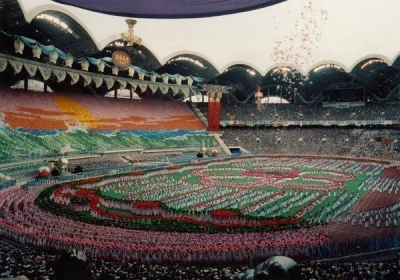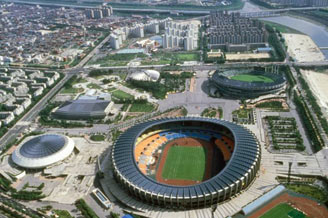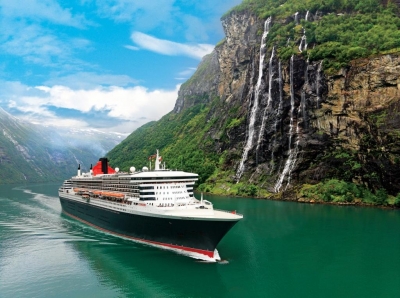How is the job of a mountain rescue team?

Stung by freezing rain, buffered by high winds, and with snow crashing down on them every few minutes, two young mountaineers – Philippe Berclaz and Philippe Heritier – had spent four days trapped on a tiny ledge more than 10,000ft (3000m) up in the Swiss Alps.
The two Philippes, both in their early 20s and training to be professional mountain guides, had set out in August 1975 to climb the almost vertical, north-east face of Piz Badile. The mountain rises 10,850ft (3300m) like a gigantic knife blade on the borders of Switzerland and Italy. The climbers had got to within some 500ft (150m) of the summit when dark clouds rolled down and they found themselves in the middle of a blizzard.
Unable to go on the top, or back to the bottom, they abseiled 130ft (40m) down to a narrow ledge, with a sheer drop of 2200ft (670m) beneath them. They attached themselves by ropes and pitons, or iron pegs, to the granite face and spent their first two days there in agonies of cold. Repeatedly they shouted for help, but each time the wind mocked them and carried their cries away.
On the afternoon of the third day there was a break in the clouds, the storm eased, and their desperate yells and whistles were heard by two German tourists, far below in the Bergell Valley.
News of their plight was telephoned to Swiss Air-Rescue in Zurich, the volunteer organization that deals with mountain rescues in Switzerland. By then dusk was falling, and fog had blotted out Piz Badile. No rescue attempt could be considered that night.
At dawn the next morning, however, the air-rescue service went into action. They rang Beat Perren, head of Air Zermatt, a commercial helicopter service, and commissioned him to undertake the rescue. Within minutes he and his chief pilot, German-born Siegfried Stangier, were flying the 100 miles (160km) to Piz Badile in a powerful Lama helicopter, equipped with a winch.
They reached the mountain in an hour and saw the two stranded mountaineers clinging like flies to the white wall of the north-east face. Strong gusts of wind threatened to send the chopper – with its whirling rotor blades – crashing into the mountain. Siegfried Stangier was unable to get as close to the two men as he would have liked.
So a cable was later lowered 150ft (45m) to the ledge. On the end of the cable was a sack containing a walkie-talkie, warm clothing, flasks of hot tea, dried beef and vitamin sweets. The mountaineers were soon in radio contact with their rescuers, and reported that they still had the strength to lock their rope harnesses into the safety catch which was fitted to the cable.
But cloud and wind delayed the rescue bid until six that evening, when the conditions suddenly cleared. Only one man at a time could be winched to safety, and it was agreed that Philippe Berclaz would be the first off.
Cautiously, Stangier manoeuvred the chopper until the tip of the rotor was about 25ft (7.5m) from the mountain face. Berclaz unhooked himself from the wall and held Heritier – who was still anchored to the granite – tightly around the waist. Heritier grabbed the cable with numbed, frost-bitten fingers and snapped the cable’s safety catch onto his friend’s harness.
Suddenly, Berclaz was whisked into the air, dragging his friend off the ledge. Helplessly, Heritier dangled there by his rope and piton. Then, using every last ounce of determination and strength, he managed to scramble back onto the ledge. Meanwhile, Berclaz – suspended from the end of the helicopter cable – was flown to a stone shelter on the plateau above the Italian border. There, helpers guided him gently to the ground.
Later that night Heritier – in the face of freezing wind – succeeded in fastening himself to the rescue cable at the fourth attempt. Soon he, too, was swinging through the air to safety.
Land based
Since the early 1970s, helicopters have proved the most effective way to locate victims of mountaineering accidents and take them and their rescues to safety. The choppers’ manoeuvrability and speed are essential in getting badly injured people to hospital.
But they are not the perfect answer. They are expensive and cannot operate in fierce winds, heavy snow and thick cloud. The noise of their rotor can also trigger off an avalanche. They are best suited for hazardous alpine rescues – and are not suitable for prolonged and remove rescues, where refueling can be a problem.
So the traditional land-based means of rescuing people trapped on mountains, or buried by avalanches, are still employed.
On Mont Blanc, for instance, overland rescue teams are involved in more than 400 rescues in a year.
The highest peak in Western Europe, Mont Blanc towers almost 15,800ft (4800m) above the borders of France and Italy. It attracts more than a million visitors a year – many of whom want to climb to the top (in summer, some 200 people a day do so). In 1987 the mountain claimed 44 lives, and almost 300 people were injured.
Almost every mountain region has some kind of rescue service, but the more popular resorts – the Alps, the Scottish Highlands, and the Rocky Mountains in North America – have highly trained teams of professionals, with sophisticated networks to coordinate their operations.
Everywhere, mountain rescue organizations work closely with the armed forces, local police, the Red Cross and other medical services, and various rescue specialists such as the coastguard and dog handlers.
A basic mountain rescue team consists of a team leader or controller, who directs the operation from a base off the mountain; the party leader, who directs the team during the search and rescue; and as many people as necessary, depending on the scale of the accident or disaster.
Team members are almost always local expert climbers familiar with the terrain and weather conditions. They are all trained to work in snow, ice, bare rock and atrocious weather. They also receive first-aid training, even though larger teams have doctors or paramedical staff. Communication is by radio or portable telephones.
Depending on the terrain and weather, the team may climb on foot, or with snowshoes or skis; they may travel by horse or motor vehicle; they may use sledges or snowmobiles; or they may arrive by helicopter.
Rescue teams usually use specially trained dogs to locate victims who are lost, and to help dig out people buried in an avalanche. A dog, with its acute sense of smell, can search an area in the time that it would take 20 men to cover the same ground. Dogs – usually German shepherds, Labradors and border collies – are trained to locate any person lost in the area. (St Bernards, traditionally associated with alpine rescue, are considered too cumbersome to work in difficult terrain.)
In March 1985, for instance, a group of Royal Navy sailors – nine ratings, two officers and a member of the Women’s Royal Naval Service – were mountain walking in Wales. They became stuck on a slippery ledge 500ft (150m) from the summit of Glyder Fawr – a 3280ft (1000m) sister peak of Snowdon. The party was reported missing when it failed to return home by 9.30 that evening.
‘A good hot-water bottle’
Two local mountain rescue teams set off for Glyder Fawr, as did Philip Benbow – a builder’ merchant and member of SARDA, the Search and Rescue Dog Association. With his black Labrador, Jet, he scrambled through the icy darkness with Jet sniffing the winds for any human smell.
Suddenly, Jet shot off up a steep slope followed by his master – who was guided by a small green light on the dog’s jacket.
‘Jet was far ahead when I knew by his bark he had found the group’, Benbow said later. ‘The coldest was the young Wren, so I put Jet in a sleeping-bag with her to thaw her out. A dog has a higher-than-human body temperature and makes a good hot-water bottle.’
Benbow contacted the mountain rescue base on his radio, and before long team members arrived with casualty bags to warm the rest of the frozen walkers. Daylight broke and an RAF helicopter arrived and winched the party – Jet and Benbow included – from the ledge and back to safety. ‘Jet didn’t look too cheerful as we dangled from the aircraft,’ commented Benbow, ‘but it’s all n the job!’
Picture Credit : Google









